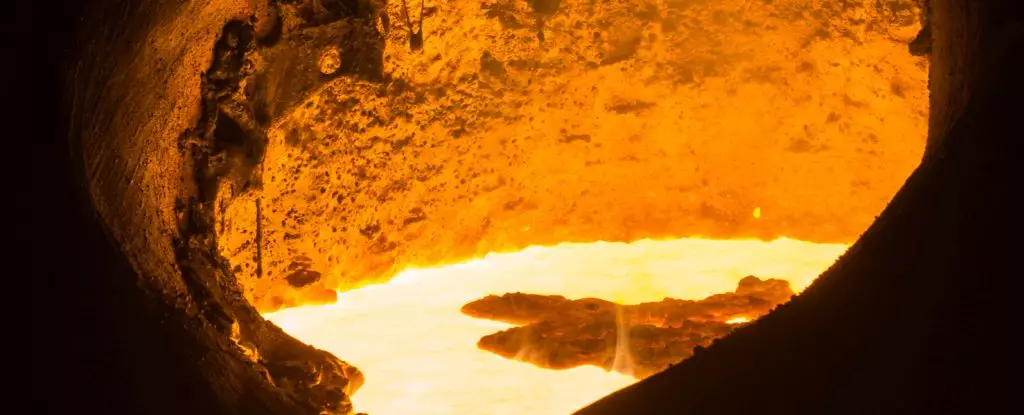Recent scientific revelations shed light on one of Earth’s most tantalizing secrets: our planet’s core is chock-full of gold and other precious metals, which are astonishingly leaking out into the crust. Research spearheaded by geochemist Nils Messling and his team from Göttingen University unveils a captivating picture—a picture that not only tantalizes our imagination but also ignites a spirited debate about resource allocation and environmental ethics. The implications of these discoveries are staggering, offering a glimpse of a world where Earth’s hidden riches could either transform our economy or exacerbate our already dire environmental crises.
Uncovering Underground Wealth
With more than 99 percent of Earth’s gold hoarded away in an inaccessible metallic core, the revelations of this study provoke a profound tension between aspiration and reality. Just how much of this wealth remains untapped? It’s not just about gold; other rares like palladium, platinum, and rhodium stealthily make their way from the core through volcanic activity. It’s ironical—while the planet itself may be uniquely rich with resources, humanity battles over relatively pitiful amounts of gold in the crust. The study hints at a vast reservoir beneath our land, begging the question: if this material is leaking out, why aren’t we harnessing it more efficiently?
If you look deeper beyond immediate economic temptations, the moral implications become glaringly obvious. The notion of “digging deeper” into the Earth merely to sate societal indulgence speaks to the darker side of consumerism, where wealth is perceived in terms of outright possession rather than responsible stewardship. How ready are we to exploit these slow leaks at the expense of environmental degradation?
Ruthenium: The Key to Unlocking the Core
Among the many precious elements seeping into our crust, ruthenium has emerged as a hallmark for understanding the core’s output. The researchers employed advanced isotopic analysis to differentiate between ruthenium drawn from deep within the Earth and that which perhaps arrived from extraterrestrial sources. The exercise not only reveals the emerging presence of these heavy metals in our crust but also underscores the limitations of our current model regarding planetary formation and resource distribution.
What does it signify that ruthenium-100 can now be distinctly traced to the core? It’s a glaring indication that our Earth’s core isn’t the impenetrable fortress once imagined. Instead, it acts almost like a life form, evolving and contributing to surface dynamics. This blurring of boundaries between the core and the crust fosters not only scientific curiosity but raises ethical concerns about the extent of humanity’s reach into Earth’s innermost sanctum.
The Iron Catastrophe Revisited
The phenomenon termed the “iron catastrophe” serves as a crucial backdrop to this discussion. Early in Earth’s formation, heavier elements sank to the core in a chaotic cascade of molten materials. This initial catastrophe has evolved into a metaphor for broader societal issues—the current mismanagement of resources and our collective neglect of sustainable practices. As we surf the waves of technological advancement, it’s essential we do not allow an insatiable to consume what should be handled with care.
The existential query remains: how can we balance the undeniable allure of Earth’s treasures while preserving the integrity of our planet? The leaking riches of the mantle present a unique opportunity—not for unrestrained mining but for a reconsideration of how we value natural wealth. A solid framework for responsible extraction, accompanied by rigorous environmental safeguards, is necessary if they are to be harnessed sustainably.
Rethinking the Narrative on Earth’s Riches
The implications of these findings challenge the standard narrative that frames Earth’s resources as infinite and readily available. It’s time to shift the conversation towards a more balanced view—one that aligns economic opportunities with the urgent need for ecological responsibility. With gold and other precious metals that could potentially rise from the depths to the crust, we face a different type of challenge: one that cannot ignore the demand for sustainable practices in an age of consumption.
This perspective urges us not only to look for minerals but also to reflect on our relationship with Earth itself. To quote the research team’s own words, “Our findings show that the Earth’s core is not as isolated as previously assumed.” This shouldn’t just wrestle with our scientific views; it should plunge into our understanding of how we manage and respect the planet. In doing so, we may discover that the real treasure isn’t merely the gold that could line our pockets, but the harmony we achieve with our home planet.


Leave a Reply